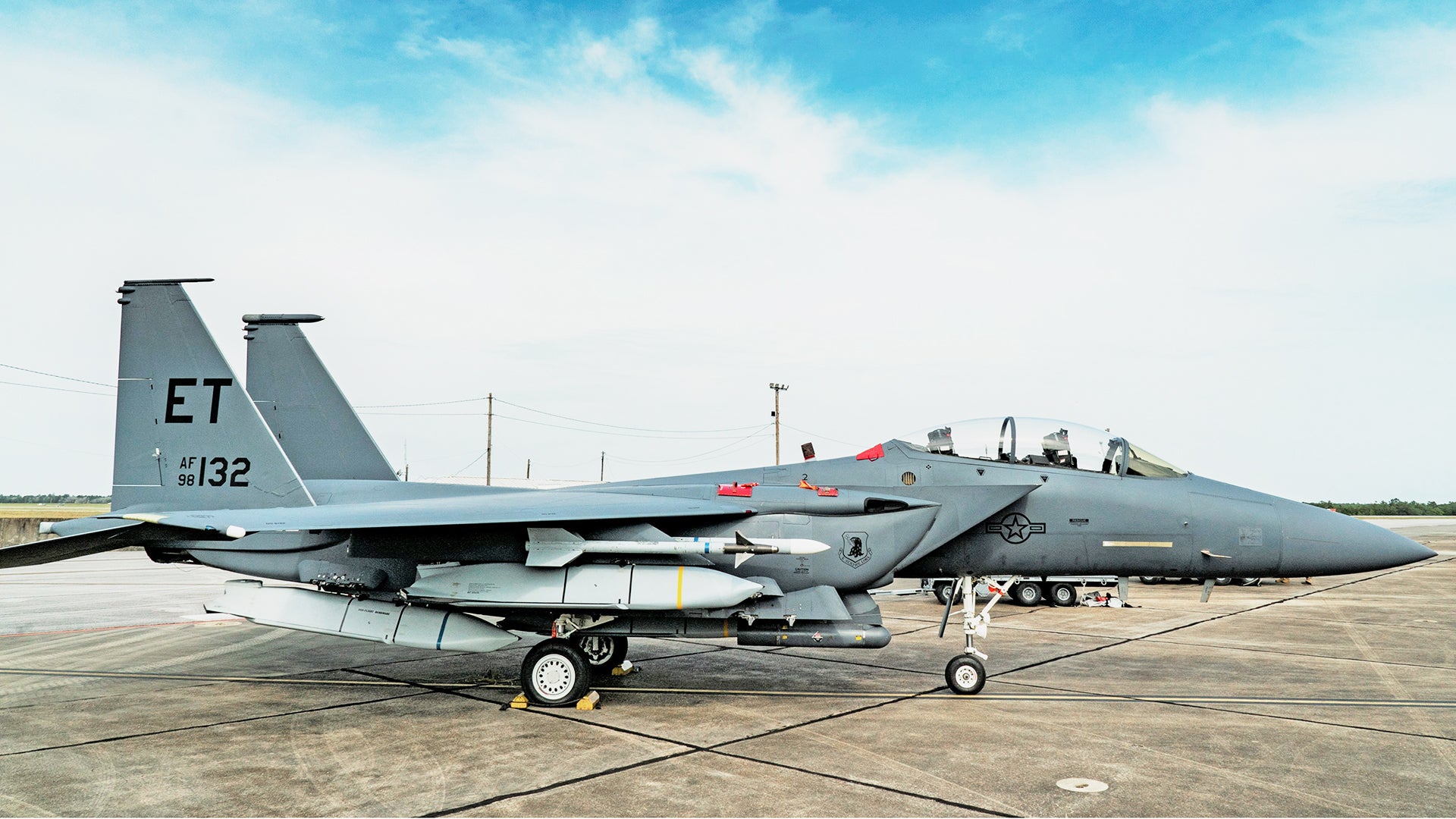A U.S. Air Force F-15E Strike Eagle fighter jet has, for the first time, been loaded up with five AGM-158 Joint Air-to-Surface Standoff Missiles, or JASSMs, as part of a proof-of-concept at Eglin Air Force Base, Florida. The jet has apparently not yet flown with the five stealthy cruise missiles attached, but there are plans for the tests to continue, with the aim of more than doubling the Strike Eagle’s previous JASSM load.
The Air Force announced details today of Project Strike Rodeo, which could potentially allow small formations of F-15Es to take on some of the kinds of missions previously flown by bombers. At the same time, it is noteworthy that the service is looking to increase JASSM capacity on the B-1B Lancer, too, with plans to add 12 external JASSM-series weapons to the 24 that can be carried in its internal bomb bays.
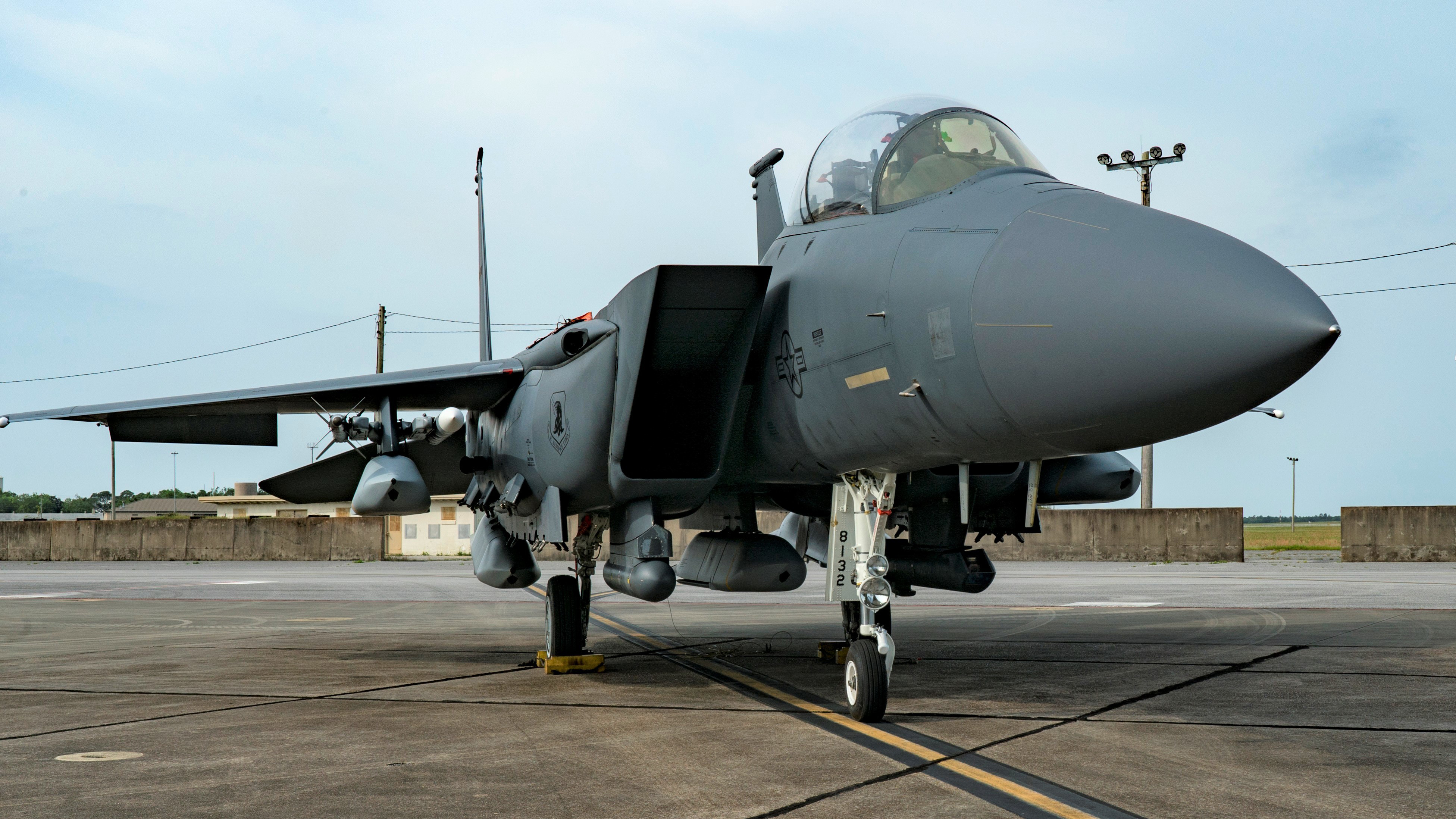
The F-15E five-JASSM load-out trial was undertaken by the 85th Test and Evaluation Squadron (TES), the “Skulls,” part of the 53rd Wing at Eglin Air Force Base. Back in March, this same squadron carried out another F-15E weapons test, assessing the ability of the jet to carry 15 Joint Direct Attack Munitions (JDAMs) of various types, primarily as a means of moving munitions into combat theaters at short notice. Last month, that type of configuration was used in an operational setting, when an F-15E moved 12 500-pound-class JDAMs, plus four Small Diameter Bombs (SDBs), as well as defensive armament, between bases in the Middle East.
Project Strike Rodeo has its origins in January this year when the 53rd Wing sketched out a tactical scenario that was based around escorting a bomber loaded with standoff munitions to a release point in a highly-contested environment. This work was conducted during a Weapons and Tactics Conference (WEPTAC), an annual two-week event involving various units from the Combat Air Forces.
One of the proposals put forward for this type of mission involved using a formation of fighters instead of a single bomber to employ a JASSM salvo. This would “reduce the size and complexity of the strike package,” as well as “distribute mission risk across the force,” in the words of an Air Force media release. At the same time, this kind of package would be able to self-escort into the firing area, bringing to bear powerful air-to-air capabilities if required.
Until now, however, no Air Force fighter can carry more than two JASSMs, so a study began to see if it would be feasible for an F-15E to carry more. In its standard configuration, the Strike Eagle is not able to accommodate JASSMs on its conformal fuel tank (CFT) weapons stations, since the container from which the missile is loaded onto the jet won’t fit under the F-15E without hitting the main landing gear.
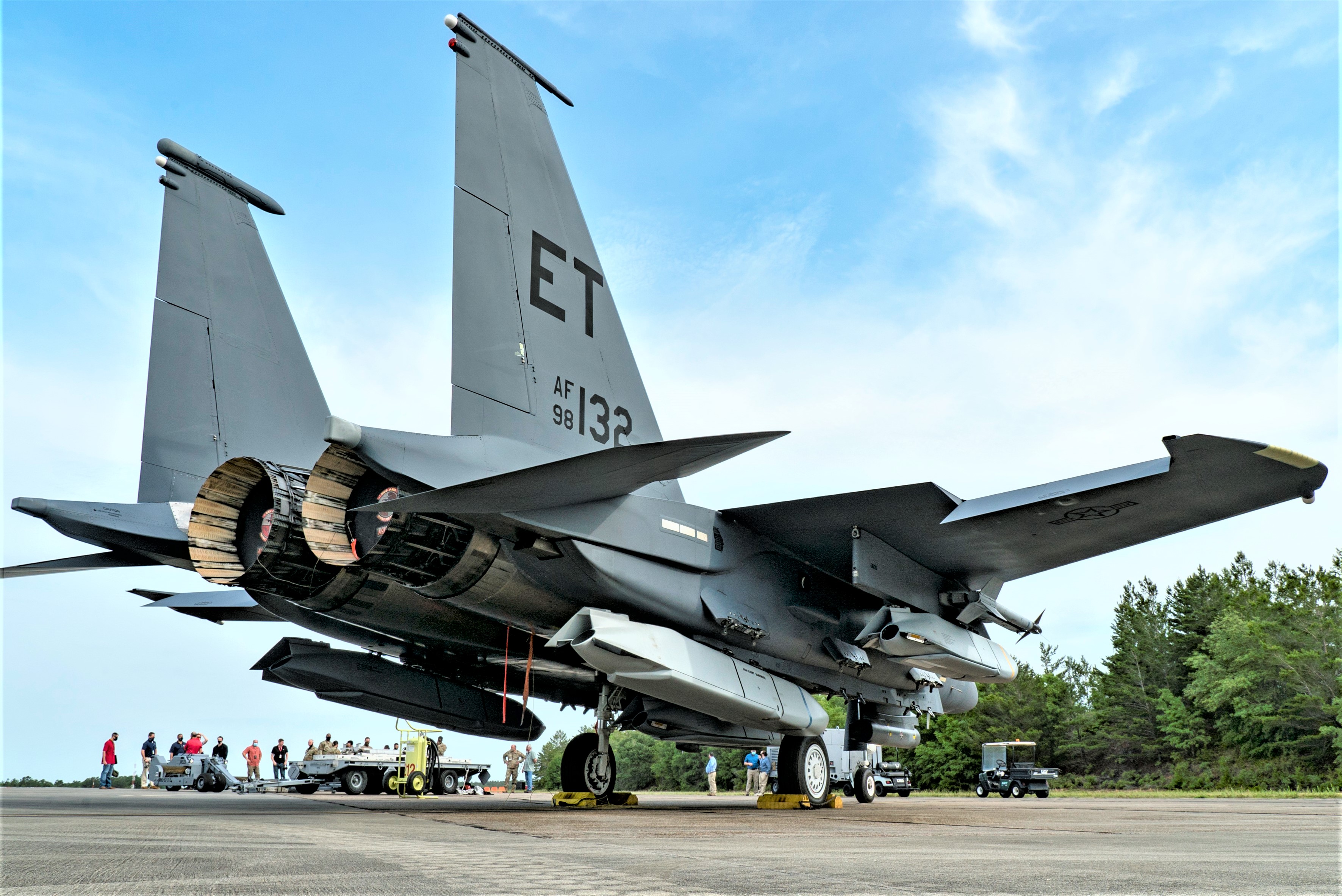
With that in mind, a new loading tool was devised at Eglin, permitting JASSMs to be loaded on the rear CFT stations. Once the F-15 System Program Office became aware of this work, it provided funds for a load test, which was completed within five months of the idea being conceived.
“No one told us to do this,” explained Lieutenant Colonel Mike Benitez, the 53rd Wing director of staff. “We saw the need and the opportunity, so we executed. This infectious attitude drove every unit or office we coordinated with. Everyone wanted to see if we could do it, and no one ever pushed back and asked for a requirement or a formal higher headquarters tasking.”
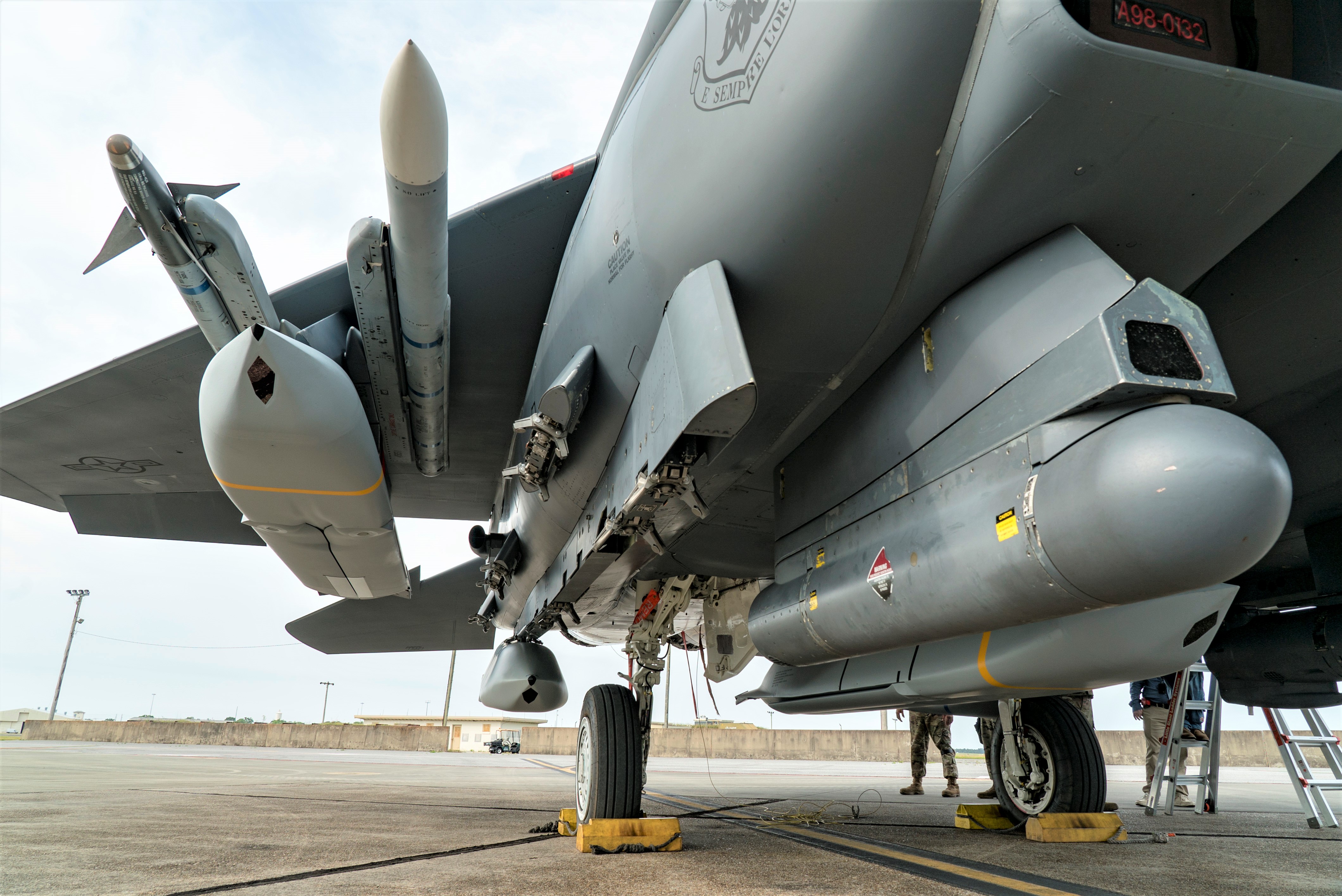
“This is a squadron innovation effort with operational and strategic implications,” Benitez added. “Project Strike Rodeo is all about creating options for combatant commanders, which ultimately can be used to create multiple dilemmas for the adversary.”
It seems likely that the F-15E has already been tasked with at least one high-profile JASSM strike in the past, as part of the raid that killed the terrorist and ISIS founder Abu Bakr Al Baghdadi, which took place in Syria in October 2019. Shortly after that raid, The War Zone
surmised that the delivery platforms for the JASSM strike were F-15Es based in Jordan. That hypothesis was largely confirmed when two of the jets landed at RAF Lakenheath, England, with silhouettes of the stealthy JASSMs among the numerous other bomb symbols. In its initial AGM-158A form, the JASSM has a range of around 330 miles and weighs 2,250 pounds.
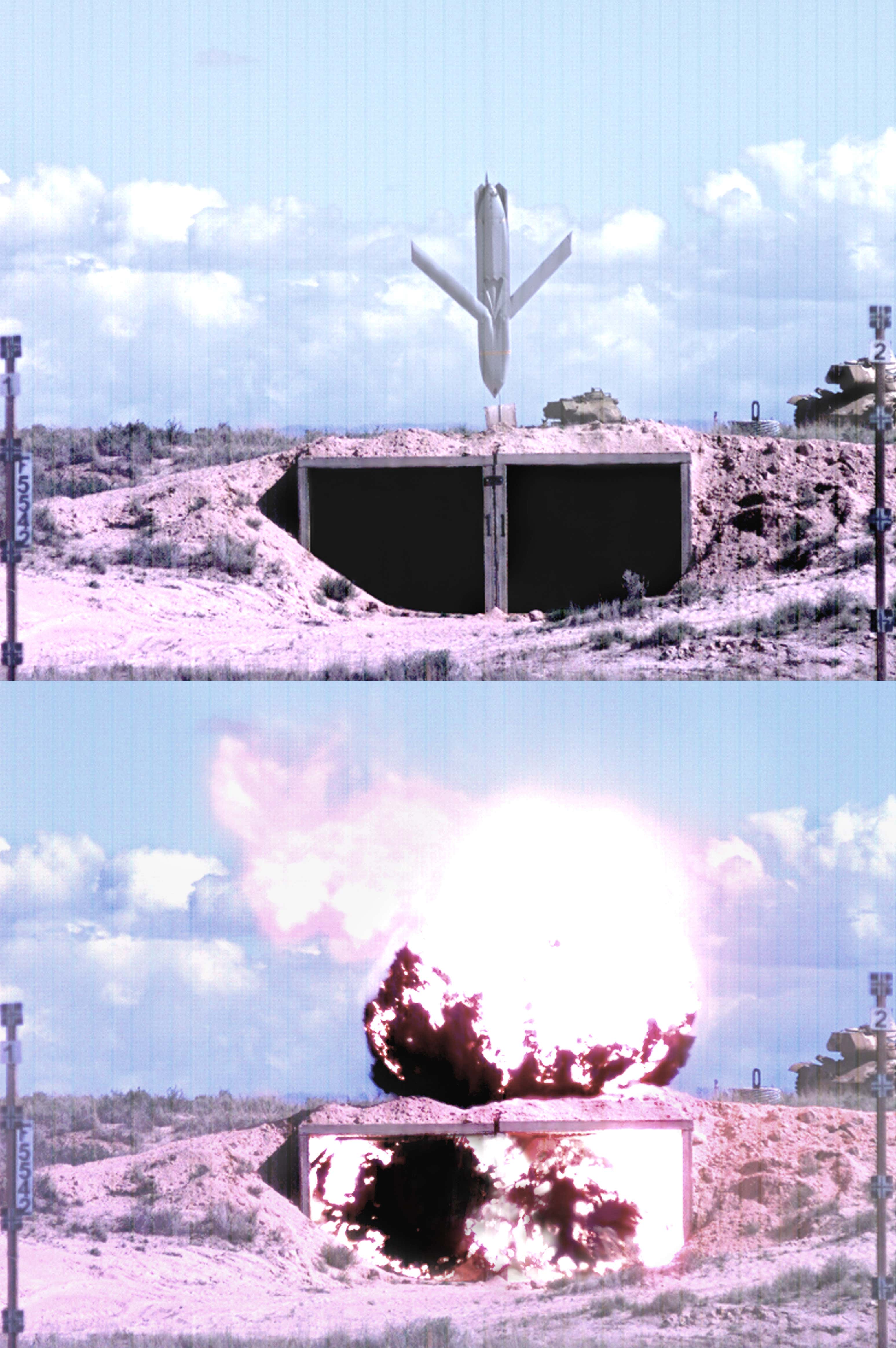
While stealthy cruise missiles might not be an obvious choice for this kind of mission, their long reach ensures that, when required, manned tactical jets can employ them without the need to venture into western Syria to strike targets in an area where Russian, Syrian, and Turkish forces are all present.
In other theaters, meanwhile, Air Force F-15Es are training to use the JASSM for potential future contingencies. We recently looked at how Strike Eagle crews were working through the tactics, techniques, and procedures that would be involved in carrying out cruise missile strikes in the strategic Baltic Sea region, home to a major Russian military stronghold, using the AGM-158. You can read more about that exercise, and the relevance of the JASSM in that environment, here. In the Baltic, and elsewhere, the Air Force would rely on the JASSM in particular as a critical weapon for breaking down an enemy’s anti-access/area-denial umbrella.
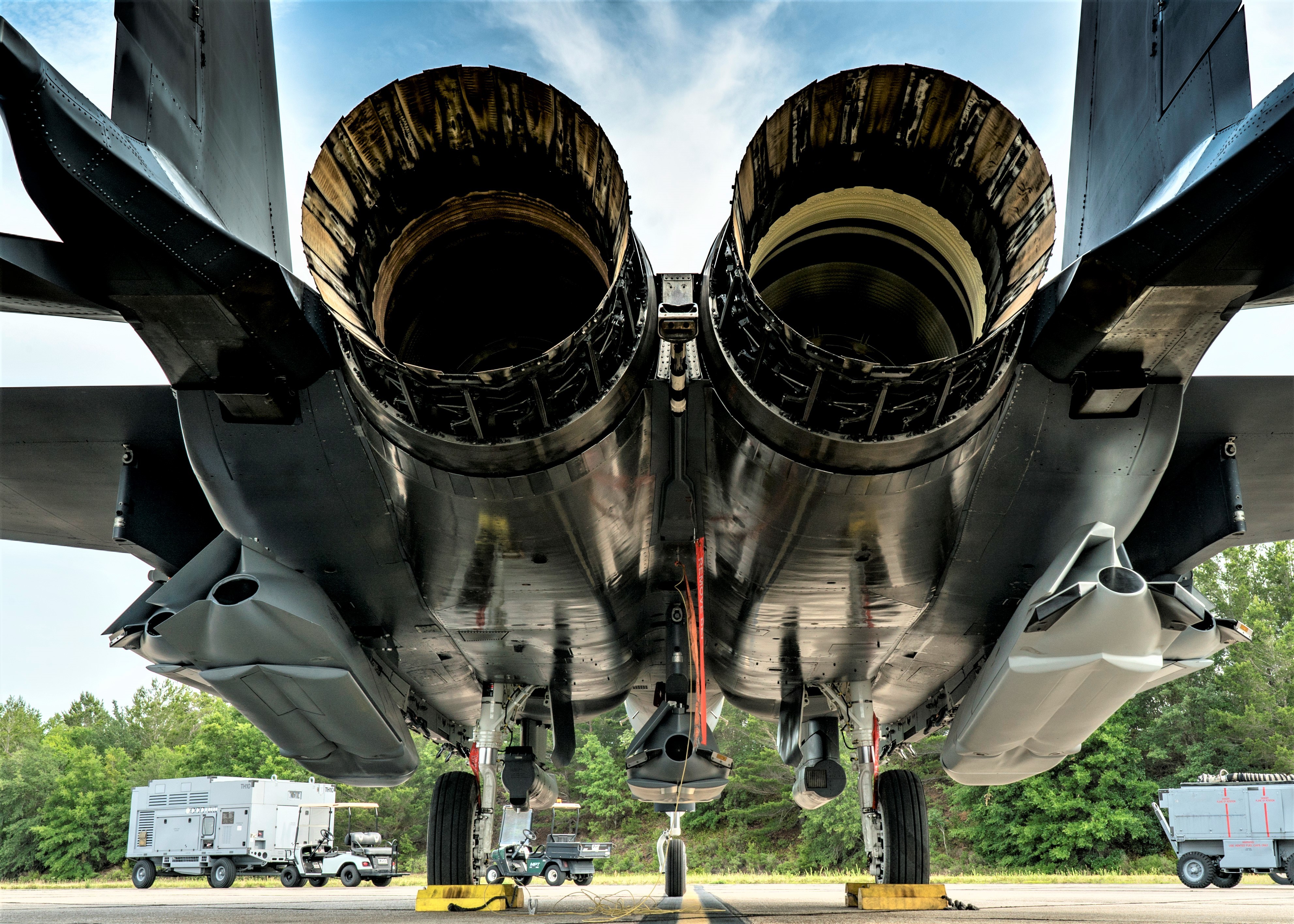
Earlier this year, we also saw images of an F-15E carrying a live AGM-158B Joint Air-to-Surface Standoff Missile-Extended Range cruise missile, or JASSM-ER, which has a publicly stated range of at least 575 miles. On that occasion, the F-15E launched the AGM-158B over the White Sands Missile Range in New Mexico as part of a test on January 7.
The extended-range AGM-158B variant arrived in service in 2014 but was originally limited to the B-1B bomber. Integration of this version on the Strike Eagle came later, with the aircraft only achieving full operational capability with the new missile in 2018.
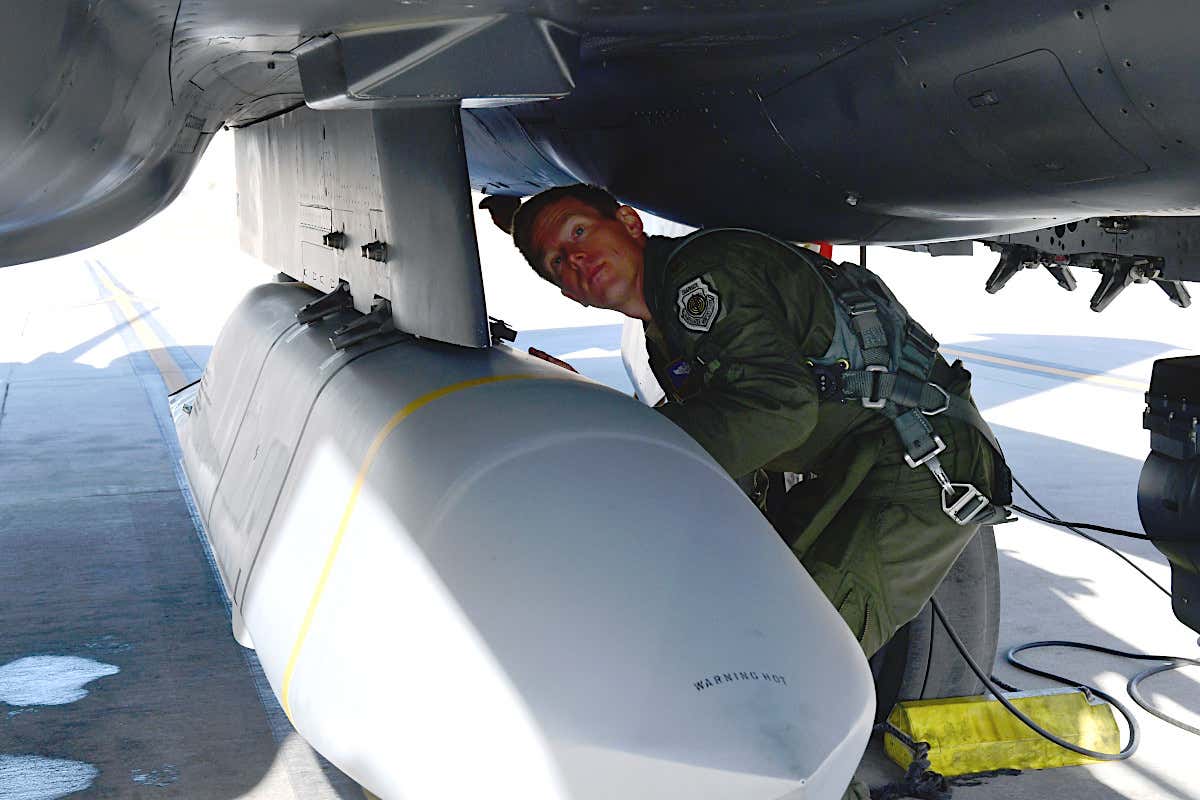
In the meantime, the JASSM family has now also been expanded to include an anti-ship weapon, the AGM-158C Long Range Anti-Ship Missile (LRASM), while the retirement of the AGM-86C/D Conventional Air-Launched Cruise Missile (CALCM), carried by the B-52H, has left the JASSM as one of the Air Force’s most important air-launched conventional standoff weapons.
In the future, the Air Force, and the F-15E, are likely to receive an even longer-range version of the JASSM, the AGM-158D JASSM-XR, which is likely to be able to hit targets a distance of 1,000 miles.
All in all, the emergence of the JASSM series of weapons has come at a very opportune time in the career of the F-15E, as the jet undergoes some far-reaching upgrades of its own to ensure its capabilities — perhaps until it is eventually succeeded by the new F-15EX, which remains an option, and which would be able to carry at least five JASSMs.
With Project Strike Rodeo seemingly set to allow a single F-15E to carry five of these potent weapons into battle, there is yet another reason for the Strike Eagle to retain its unofficial title as the Air Force’s most in-demand strike platform.
Contact the author: thomas@thedrive.com
